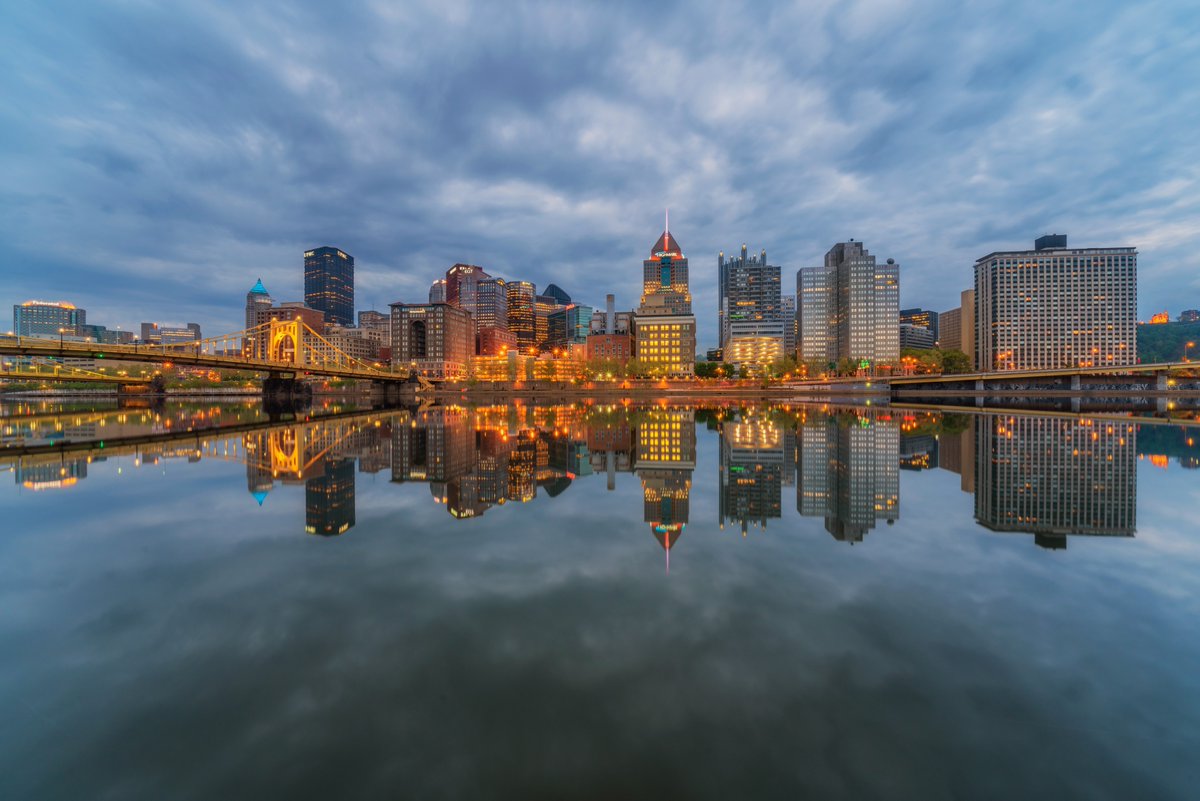
Image credit to the masterful Dave DiCello. Follow him @DaveDiCello and visit his online shop at www.davedicello.com
Good [insert date this post eventually goes up] folks! As most of you know I am a nerd, and when I get crushing deadlines for medical exams coming on me and I need a chance to take a breath I always go to the same place, the Penguins. After completing a licensing exam two weeks ago and realizing that July is somehow next month already I didn’t have any other option but to turn to Penguins history to clear my mind. I was aimlessly going through jersey history and thought about making a post based on the (most likely true) alternate jersey this year but felt that would be boring (also, I’m not sure there is a better baby blue-era jersey than this one):
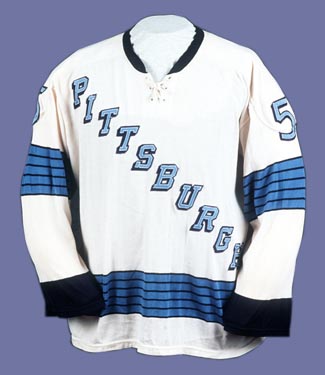
Not saying I want them to go back to the blue, but this was a solid sweater. Alas this post is neither about jerseys of yesterday nor tomorrow. Instead my searches landed me on the Penguins captains history. In their 51 year history 18 players have worn the “C” for the Penguins, though that number is inflated a bit considering Mario Lemieux, Paul Coffey, John Cullen and Randy Hillier all wore the “C” at various times during one season. The Penguins have technically had 13 full time captains and only 2 for more than 4 seasons, they are of course Mario Lemieux and Sidney Crosby. This post is dedicated to these two players and the teams that they have captained both in the regular season and in the playoffs, it is the tale of two captains, and in fact, two cities.
Editor’s note: We don’t have an editor but I wanted to look cool. This post became a beast so I have decided to break it up into part one and part two. Enjoy.
What is Hockey?
The city of Pittsburgh did not immediately grasp the boys of winter when the city was awarded a franchise during the first NHL expansion. During the inaugural season of 1967-68 the team drew in the second lowest spectators per game at 7,407, almost 3,000 better than the dismal 4,890 the Oakland Seals brought in. In their third year the team made the playoffs for the first time while still sitting 11th out of 12 in attendance. During their first decade of existence the Pens would go 286-364-128 with 5 playoff appearances supported by an average crowd of 9,382 with max attendance being 11,455 in 1975-76 (which was still just 12th best out of 16). The Penguins would play 7 more seasons before the draft that landed them Mario, in those 7 years the team would make the playoffs 4 times while still averaging 9,930 spectators per game. The two years before Mario the team flat out stunk putting up a franchise worse 18 win 53 loss season in 1982-83 only to top it in 1983-84 with just 16 wins and 58 losses. During these two years the attendance went from 11,299 in 1981-82 to 8,408 in 83-84 (lower than the inaugural season) to a dismal 6,839 in 1983.
As you can imagine a 16-58-6 record lands you the number one pick in the draft, and though there are (plausible) theories that the Penguins tanked the second half of that final season the facts remain the same, the city of Pittsburgh was barely interested in hockey and not at all interested in losing. By the time the 1984 draft came around, the few that followed hockey were glamouring on and on about this teenage wonder kid while most of the city forgot there was a team.
The draft back then was 12 rounds. The Penguins had three first round picks (1, 9 and 16) and then didn’t pick again until the 4th round. Overall the team had 10 picks in the draft, obviously using the number one overall to draft Mario. The team picked Doug Bodger at #9, a man who would play in 1,071 NHL games, outside of him only 2 of the other 8 men selected would ever play in the NHL and they were limited to 44 games (number 16 overall pick) and 14 games, respectively. Their 9th round selection John Del Col never played in the NHL, two players still on the board after that selection… Luc Robitaille and Gary Suter. Luckily the Pens didn’t whiff on the first overall selection and there was some new hope in Pittsburgh as attendance climbed by 4,000 up to 10,018 in 1984, which was still last in the league.
A Team is Born
If you’ve been a fan of sports for more than 30 seconds you know all about unproven hype invested in new draft picks (Daniel Sprong). Lemieux was that hype times infinity. It took Lemieux one shift to get the 12 people in Pittsburgh watching excited:
Lemieux would play four seasons with the Pens putting up a casual 215 goals and 301 assists in 292 games before he was given the “C” in 1988-89 (Mario was given the C during the 87-88 season, but he did not start the season with it).

During his first season as captain Lemieux didn’t disappoint as he recorded a career high in points with 199 (85 goals, 114 assists), including this feat:
It was behind this monster season the Lemieux would lead the Penguins to their first playoff berth in 6 years. That team would sweep the first round of the playoffs before bowing out in 7 games in round 2 during the franchises 10th playoff appearance in its 22nd season in the league, the first round sweep over the Rangers marked the first playoff series victory for Pittsburgh since a 2-1 series victory over Buffalo in 1978-79 and was the third playoff series won in franchise history. Here is part 1 of 3 uploaded videos from these awesome season conclusion videos KBL used to do.
The following season the Penguins would fail to qualify for the playoffs despite two players hitting triple digits in points (Lemieux 123 and Coffey with 103), it was the last time the Penguins would miss the playoffs in the 20th century. In the 4 years that spanned Mario’s draft day and the end of the 1989-90 season the Penguins attendance average had grown from a league worse 10,018 to a top ten 16,018. The interest was there, but following another playoff miss would it stay?
The following season Lemieux and the Penguins changed the scope of Pittsburgh hockey forever as they beat all odds and went from non playoff team to Stanley Cup champions. Though he was limited during the regular season to just 26 games (in which he managed a pathetic 45 points) Lemieux took the team by the reigns in the playoffs putting up a stout 16 goals and 28 assists for 44 points in 23 games as he lead the city to its first every hockey championship.
That pass from Murphy to Lemieux for the second goal is 50 shades of stupid. The Pittsburgh Penguins were no longer nobodies in the NHL, they were Stanley Cup champions.
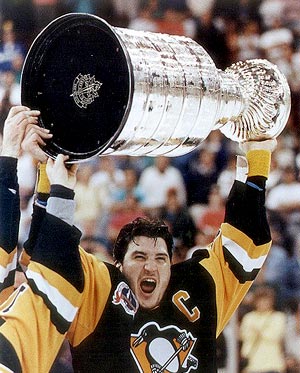
The following season hockey fever spread in Pittsburgh as the team hit an average of 16,000 spectators per game with the actual number finishing at 16,018. The 1991-92 team also tasted success, and put up a season that forever changed the expectations of every Penguins team that followed.
The Penguins would earn their second cup in a row after winning 11 straight games in the playoffs. That’s right, after coming from a 3-1 series deficit in round one to beat the Capitals in 7 games the Pens would win game one of round two before dropping the next two games. Down 2-1 the team didn’t lose again, finishing the Rangers in 6 before sweeping the Bruins in the conference finals and the Blackhawks in the Stanley Cup. The team was again lead by Lemieux in the playoffs, with 16 goals and 18 assists in his 15 games played.

The following season the Penguins put what many consider the best roster ever assembled in Pittsburgh on ice. The team tore through the regular season finishing 56-21-7 including a still standing NHL record 17 game winning streak. The Pens would go up 3 games to none on the Devils in round one before finishing them in five and then headed to the second round to face an Islanders team that finished the regular season 40-37-7. After splitting the first four games the Pens would win game 5 to take a 3-2 series lead. The Islanders responded with a game 6 win and the first quest for a threepeat went back to Pittsburgh for game 7.
Down 3-1 with less than 4 minutes to play the Pens forced overtime. Glenn Healy was in net for the Isles and had a gem of a game as you will see from the highlights. It was the 12th game of the playoffs for the Pens and the first to go to overtime, just like game 6 against the Capitals this season…(thanks Bob Grove for the stat)
Can you imagine the social media backlash on Samuelsson following the turnover that lead to the first goal? Woof.
The following year the team bowed out in the first round in 6 games to the Capitals. After being limited to just 22 games in 1993-94 Lemieux missed the entire 1994-95 season and the team made Ron Francis captain, that team would win the first round matchup against Washington before failing to advance passed the Devils in round two. In 1995-96 Lemieux returned to the team with a vengeance, with the C back on his breast he put up 161 points in 70 games while Jagr notched 149 in 82 and Ron Francis had 119 in 77. The team would handle Washington in 6 and the Rangers in 5 as they stormed to their first conference finals since 1992 where they met the Florida Panthers and those fucking rats.
The Penguins outshot the Panthers 33-25 in game 1 only to lose 5-1 (Murray sucks). After evening up the series in game two the Panthers threw 61 shots on Barrasso in game 3, winning the game 5-2. The Pens would win game 4 to even the series before shutting the Panthers out in game 5 3-0 to take a 3-2 series lead. Florida would win game 6 forcing a game 7 in Pittsburgh. The Pens trailed by 1 entering the third, Petr Nedved tied the game before this happened…
Yikes, Tommy. The Pens would reach the playoffs again the following year and get tossed by Philadelphia in 5 games in round one. Lemieux would retire following the season, halting his run as Penguins captain with 7 playoff berths, 60 playoff wins and 36 losses, and 2 Stanley Cups.
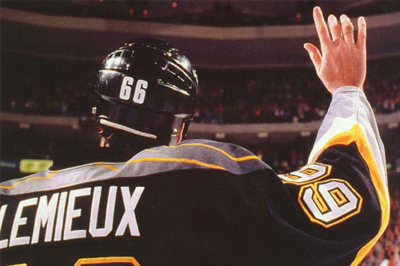
Ron Francis would take over captain duties the following season and lead the Penguins to a first round exit against Montreal. Francis would leave the team during that offseason and Jaromir Jagr was given the C. Jagr served as team captain for 3 seasons until his trade to Washington in the summer of 2001. As captain Jagr lead the Pens to the playoffs three times, the first two ending in the second round. On December 27th of the 2000-01 season Mario Lemieux made his return to the NHL. 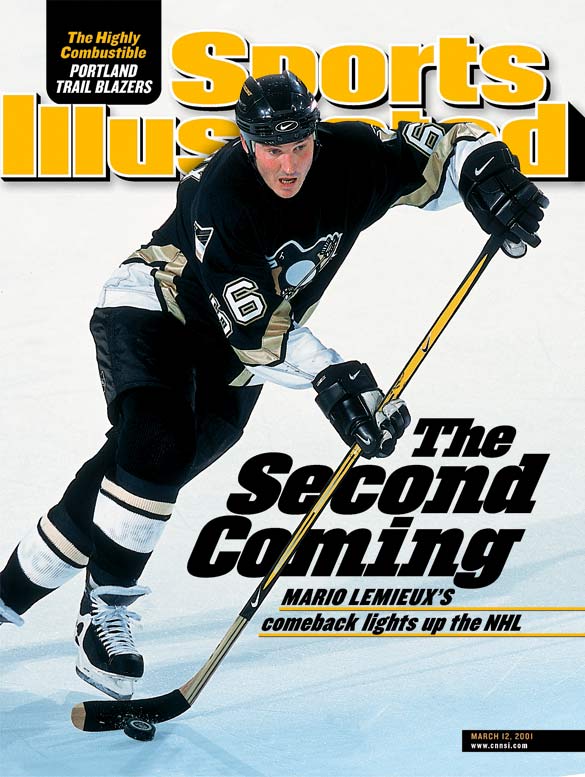
The team had a stout set of forwards in Jagr (121 points), Alexei Kovalev (95 points), Martin Straka (95 points), Robert Lang (80 points) and Mario Lemieux (76 points in 43 games at 35 years of age). The team went into the first round and upset Washington in 6 games before heading to Buffalo. The Buffalo series went seven, with games 5 through 7 all going to overtime. After falling 3 games to 2 in the series the Pens won game 6, and game 7 ended in dramatic fashion
Chill Freaking City. The team headed to the conference finals to face the Devils and quickly had the series tied after 2 before getting shut out in consecutive games at home. They would lose game 5 in New Jersey and the team would go into turmoil.
Jagr was traded that offseason and Lemieux was once again named captain. He would remain the captain for four seasons with his last being in 2005-06. The team would struggle financially, the team would struggle on the ice, the team was a mess.
Counting the 2001-2006 seasons towards Lemieux’s tenure as a captain is slightly unfair given what Lemieux had to work with, even the best teacher in the world isn’t getting the short bus riders into college. The 2001-02 squad wasn’t completely rubbish on paper…

but that team finished 28-41-8-5 despite only losing an average of 600 fans from the year before. The following season (2002-03) the Penguins leading scorer was Lemieux, with 91 points (28 goals 63 assists) in 67 games at the ripe age of 37… unreal. The point totals fell off after Lemieux with only Kovalev joining Mario in the +50 club that year as the team finished 27-44-6-5 and attendance dropped below 15,000 to a 6th worse 14,750. The win totals would fall to just 23 the year before the lockout as Lemieux was limited to 10 games and the team was paced by Dick Tarnstrom’s 52 points. A losing team with no Lemieux wasn’t a must see attraction as attendance fell to last in the league at 11,877 that year. The following year was lost to lockout.
By the time he retired for the final time Lemieux had captained the Penguins for 972 regular season games (note this is not games played by Lemieux, but regular season games played by the team while Lemieux held the “C”). Here is a chart of the team performances while 66 wore the C:
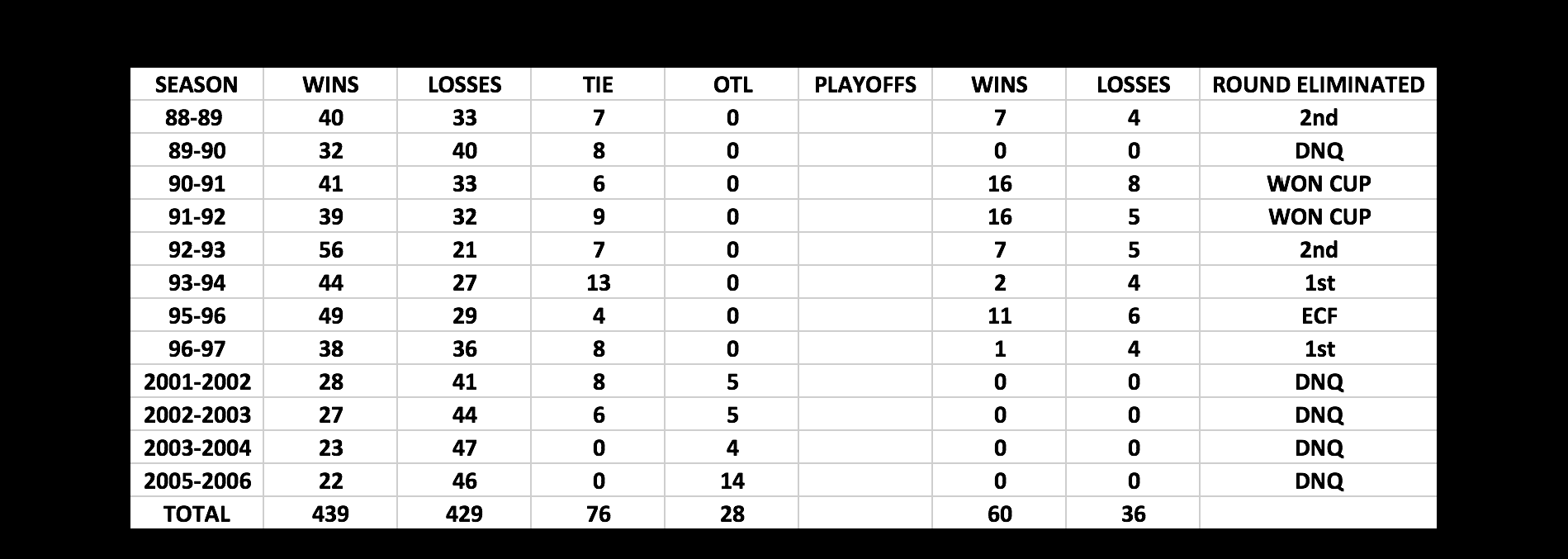
His last year as captain was 2005-06, and despite that team only winning 22 times there was a new belief in Pittsburgh. Not having hockey for a year and the bounce of a ping pong ball that landed Pittsburgh “the next one” was enough to regenerate interest as attendance shot up to 15,804 which was good enough for 20th in the league. Mario was limited to 26 games in that final season as he put up 7 goals and 15 assists and the torch was passed to Sidney Crosby. The last goal of his career was synonymous with his entire career:
It is here that part one ends, and part two begins as Mr. Crosby’s 39 goal 63 assist rookie season inspired new hope in the city of Pittsburgh.
